 陈凯一语: Kai Chen's Words:
陈凯一语: Kai Chen's Words: 这位尼克松基金会发言人的文章正说明许多美国人们对毛共中共的天真无知与道德混乱。 将毛共中共的权宜韬晦说成是为了世界和平是对真实的绝大扭曲与对人类良知的无耻践踏。 --- 陈凯
This article is from the website of Nixon Foundation. It just shows you how naive, ignorant and morally confused many Americans today are. To view Mao and the Chinese communist regime's expediency for maintaining its power/control over its own people as from their "yearning for world peace" is nothing more than a blatant insult on human intelligence and world conscience. --- Kai Chen
www.kaichenblog.blogspot.com
http://thenewnixon.org/category/cold-war/
Naivete/Moral Confusion - The Statue In Yorba Linda 无知、天真与混乱
October 1, 2009 by Robert Nedelkoff
“Leader’s Exhibit:” A statue of Mao ZeDong is featured with the bronze likenesses of nine other world leaders during RN’s presidency at the Nixon Library.
Today, as is noted elsewhere at TNN, the People’s Republic of China celebrates its sixtieth anniversary. The day is being marked with celebrations throughout that nation and in Chinese communities around the world. But there are also a considerable Chinese with a profound distrust and dislike of Communism who are, here and there, registering their protests of the PRC’s policies.
Probably the largest number of active protesters are associated with the Falun Gong movement, but there are also some whose animosity toward the PRC’s institutions is very personal and heartfelt. One of these people is Kai Chen. Chen is a 56-year-old resident of Los Angeles in the real-estate business. He was born in the People’s Republic, into a family associated to some degree with the Kuomintang party of Chiang Kai-shek, who had, in 1949, been forced to leave the mainland for Taiwan. This status meant that Chen’s family suffered considerably in the Cultural Revolution, and that he was, as a teenager, denied a university education and sent to work in the countryside.
However, it happened that by the age of fifteen, Chen had reached the height of six-foot-seven, quite unusual for a Chinese, and, around the same time, discovered the game of basketball. By this time the Cultural Revolution was moving toward its final stages and the PRC’s premier, Zhou Enlai, envisioned basketball as one of the sports that might enable his country to end its twenty years of comparative isolation and reach out to the world.
Of course, the big breakthrough in this area came when the PRC’s ping-pong team, after playing against its US counterpart in Japan, invited the Americans to China, which dovetailed with behind-the-scenes diplomatic overtures and helped make possible President Nixon’s historic trip to China in February 1972. But although it would take a few more decades before players like Yao Ming became NBA superstars, the Chinese basketball team, on which Chen played for a time, played a significant part in the 1970s and 1980s in building friendly relations between the PRC and the West.
In 1981, Chen moved to Los Angeles to further his education. After obtaining his degree from UCLA, he went into business in California, found success in his field, and raised a family. But his memories of his mistreatment in the China of Mao Zedong have remained, and, as such interviews as this one (and his 2007 autobiography One In A Billion) show, he feels that not only was he exploited as an athlete for the political purposes of a regime he has long detested, but that Beijing has continued to use sports in the same way to the present, most spectacularly in the 2008 Summer Olympics.
Last year, Chen visited the Richard Nixon Library and Birthplace in Yorba Linda, and entered the room which features one of its most prominent and written-about exhibits. What he found there upset him, and led to the protest which he made, with several others at the Library today.
When the original staff of the Library was planning the building’s permanent exhibits two decades ago, they decided to devote one of the rooms to a set of life-size bronze statues of nine men and one woman, from around the world, whose leadership qualities had formed the subject of individual chapters in Leaders, one of RN’s most readable and fascinating books. The ten statespersons selected for the Hall of World Leaders were, alphabetically, Konrad Adenauer, Leonid Brezhnev, Winston Churchill, Charles De Gaulle, Nikita Khruschchev, Mao Zedong, Golda Meir, Anwar al-Sadat, and Shigeru Yoshida, and Zhou Enlai. In the exhibit Mao and Zhou are depicted sitting on couches, much in the way that they had talked with Nixon during his trip in 1972; the others are standing. Near the statues is this quote from the President: “They are leaders who have made a difference. Not because they wished it, but because they have willed it.”
When Chen came to the Library, he was angry that Mao, a person he regards as a mass murderer comparable to Hitler and Stalin, was featured among the other leaders, and he wrote about this to Timothy Naftali, the current director of the Nixon Library. Chen’s letter and Naftali’s response can be found here.
For a while, word of Chen’s dismay with Mao’s presence in the Hall was limited to his own website and to a handful of blogs. But yesterday the Los Angeles Times published Mike Anton’s article describing the controvery and Chen’s plan to stage a protest. In it, Chen is quoted as saying: “Mao was the biggest mass murderer in human history. His hands were dipped in the blood of American soldiers who fought in Korea and Vietnam. … How can that image be put alongside world leaders like Winston Churchill and De Gaulle? It’s a perversion of American freedom. You don’t put an anti-American symbol in a U.S. museum.” Naftali wrote to Chen that he personally was less comfortable with having a statue of Mao in the room than was the case with the other leaders, and his view of the issue, as reported in the Times article, is much the same:
“I think having a statue of a person in a museum can imply respect,” he said. “I thought there might very well be confusion among visitors. With Churchill, Meir and Sadat all in the same room, there is an equivalency there and the implication that they’re all alike. They were not all alike. Mao was a mass murderer.
“It seemed to me out of place in a publicly funded museum,” Naftali added. “I don’t think it’s the best way to teach history.”
Naftali’s remarks have met with some puzzlement and criticism from those who worked, full-time or on a volunteer basis, at the Nixon Library during the decade and a half that it was operated by the Richard Nixon Foundation before becoming a part of the National Archives group of presidential libraries a few years ago. In all that time, Foundation assistant director Sandy Quinn told Jessica Terrell of the Orange County Register yesterday, no visitor made a complaint about Mao’s being featured in the Hall. Since Chen’s correspondence with Naftali a notice has been put in the Hall saying that the presence of these ten figures in the room does not constitute an endorsement of all of their policies.
The questions that Chen’s protests raise are not that easy to dismiss. The website of the NBC station in Los Angeles played the controversy for laughs today with an article titled “Pinko, Commie Statues Shock, Offend At Nixon Library.” The piece is credited to Olsen Ebright and Joseph McCarthy (presumably not that one, returned to earth at age 101) and is illustrated with the familiar photo of RN flashing the double V at the entrance to the helicopter on August 9, 1974 – but tinted as pink as, presumably, the late Helen Gahagan Douglas’s underwear.
However, Chen is deeply serious about his complaint, and his years of trauma in the turbulent China of the 1950s and 1960s make his anger at Mao’s presence in the Hall understandable. But I don’t think the founder of modern China should be removed from his couch. Mao is in the Hall because, although he wrested power violently from the Kuomintang regime in a civil war that killed tens of millions; although his misguided ideas of a “Great Leap Forward” and a Cultural Revolution brought about the deaths of millions more; and although his troops bitterly fought United States and United Nations forces for two and a half bloody years in Korea, in his last seven years he sought, with Zhou, to set aside violence and extend the hand of friendship to the United States. President Nixon reached out as well, and, with substantial help from Dr. Henry Kissinger, Winston Lord, Dwight Chapin and Foundation president Ron Walker, and many others, the stage was set for the handshake at the Shanghai tarmac between Nixon and Zhou, and the meeting with Mao, which ended almost a quarter-century of suspicion and hostility, helped prevent the possibility of a third world war between the superpowers, and made possible ties which have been truly beneficial to both countries.
As former Library director, TNN’s John Taylor, points out here, Nixon was a lifelong anti-Communist. He spent more time face-to-face with Chiang Kai-shek than with Mao. But in his years as Vice President, he was ready to have a dialogue with the Soviet Union, in the years after it emerged from Stalin’s shadow, and so met Khruschchev and then, as President, Brezhnev. Both of those men had been part of Stalin’s savage world for decades in their early careers, but when they came to power, they proved able to move beyond that awful legacy.
And so, too, did Mao and Zhou, in the years after 1969, make their efforts to move beyond the chaos, misery and isolation of the Cultural Revolution. That’s why these four men are in the Hall of Leaders – because they met that ultimate test of leadership, to try to make a more peaceful world for coming generations.






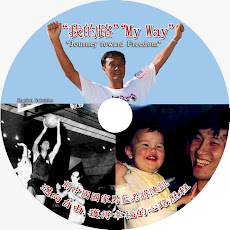


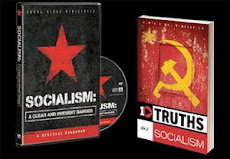




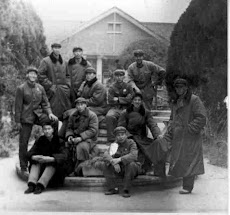


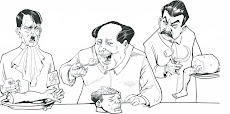
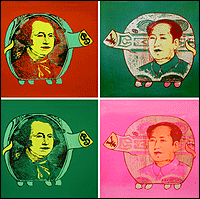
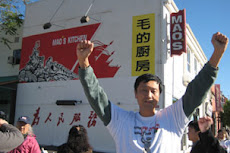


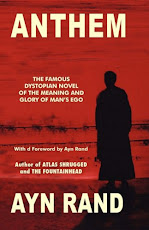










No comments:
Post a Comment